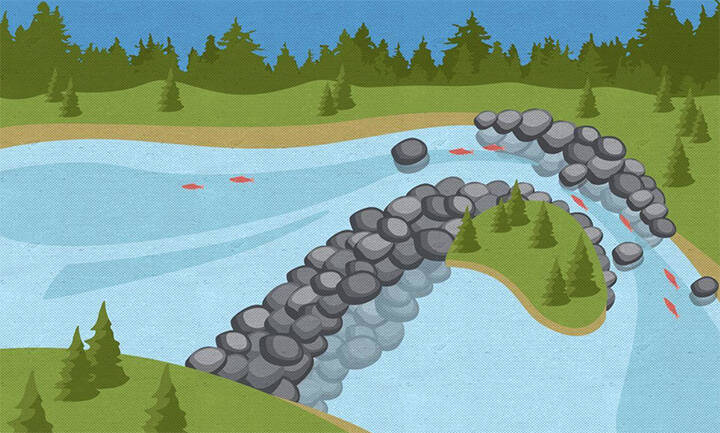Upper Fraser Fisheries Conservation Alliance (UFFCA) representatives for the the Endako Weir Project reconvened with the Village of Burns Lake town council on Sept. 7 to provide an update on several concerns surrounding the project.
The purpose of the weir is to slow the release of water from Burns Lake and Decker Lake resulting in increased flows in the Endako river in the fall for Chinook salmon and kokanee spawning season.
When the UFFCA initially suggested the project to council on May 27, though they supported the idea of restoring the Chinook salmon population, they had reservations surrounding potential high water levels caused by the weir, as well as erosion impacts. As a result, council and told the UFFCA to collect more information and consider public input so they could better understand the potential impacts.
READ MORE: Passive weir could be constructed on Endako river
In the most recent meeting, representatives for the weir brought forth preliminary findings about those issues, as well as results from several public engagement sessions, which took place in June and July.
Hydrologist Warren Grafton who is one of the representatives for the weir project, outlined in the presentation that average wastewater flows could increase as lake level rises . The reason is due to a very shallow aquifer near Burns Lake, which lies above the waste water treatment lines. An aquifer is an in-ground body of rock that holds groundwater
Grafton stated that it appears there is leakage from the wastewater pipes into the groundwater, though he said that at this time it’s poorly understood, and no hard data has been found.
His recommendation to council was installing monitoring wells, and conducting a focused monitoring of surface water, groundwater, precipitation and wastewater flows in order to gain a more detailed understanding of the relationship between groundwater or lake water levels and wastewater flows.
Grafton also recommended a review of the existing infrastructure including leak detection to determine the areas in which groundwater is infiltrating the sanitary network.
The UFFCA will meet with funders on Sept. 30 to see if reallocation of construction dollars can be used for the monitoring purposes.
In terms of erosion, engineer Barry Chilibeck told council that in general, increased water levels cause shoreline erosion, but this will not be the case from the rise in water level by the weir. The reasoning is due to the fact that the weir will raise low water levels, but not high water levels. This essentially means that there are limited possible erosion effects because water elevation will remain within the existing high and low marks of the lake.
Lisa Krebs, a UFFCA representative for the project who was running the presentation, spoke about the results of the public engagement. A total of 65 people completed a survey after a series of public zoom seminars, an in person engagement with the Burns Lake Band, and two in person sessions in Burns Lake.
According to Krebs, 74 per cent of engagement participants are very concerned about the endangerment of Chinook salmon. When asked to explain their concerns about the project, 33 per cent believed there would be no impact, 22 per cent expressed concern about erosion, and 40 per cent expressed concern about high water levels or flooding or the Endako river.
Krebs also told council that the Fisheries and Oceans Canada announced on Aug. 17 that are requiring an authorization process for the completion of the project, so no construction will begin this year.
The next step for the project to move forward is to seek out reallocation for construction funds.

